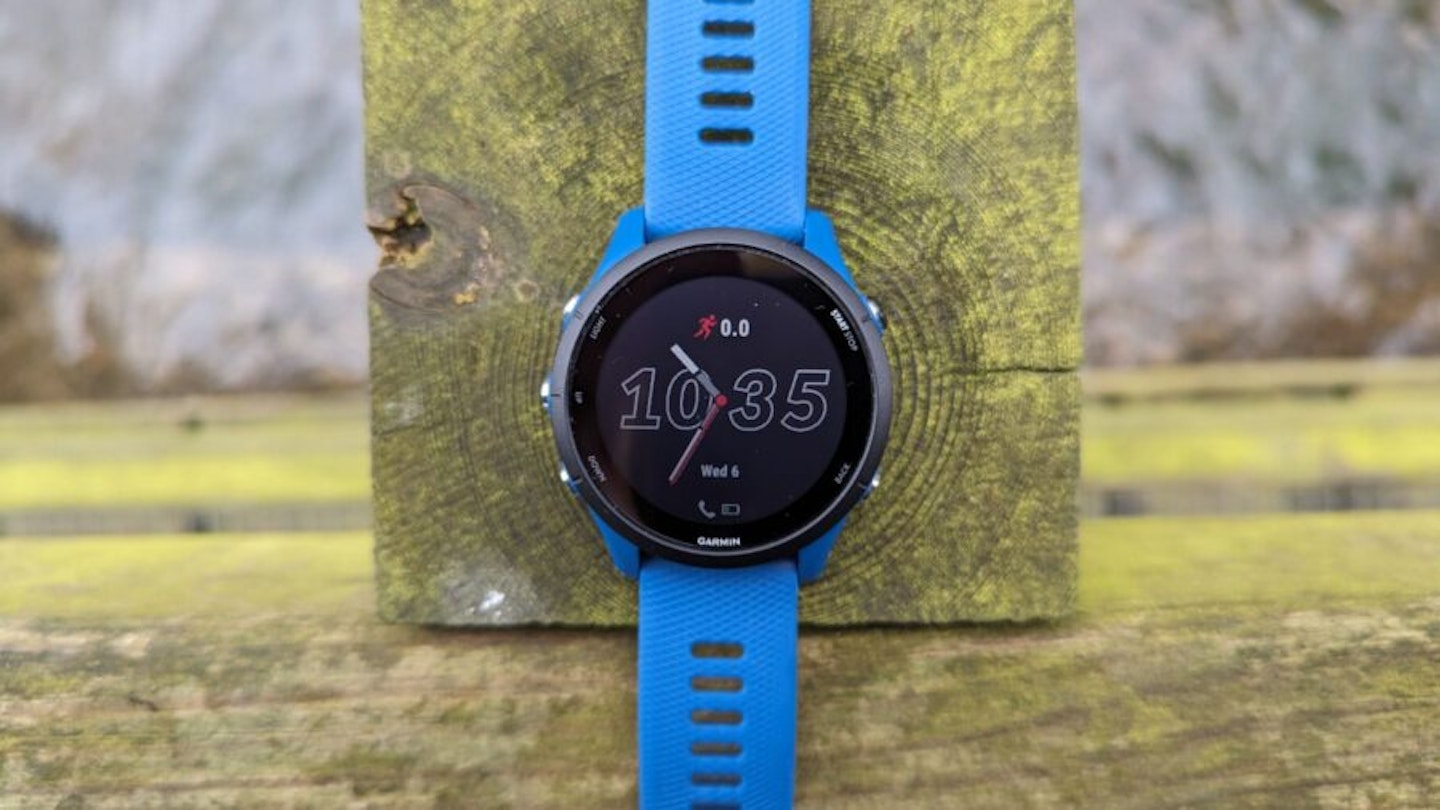Garmin’s Forerunner series is extremely well established, offering several contenders for the best running watches. The Garmin Forerunner 255 sits in the middle of the range, providing more features than more basic Forerunner models but without the high price tag of the most advanced devices.
The Forerunner 255 arrived in 2022 as a replacement for the Forerunner 245, adding missing features from its predecessor. These include an upgraded Elevate V4 sensor for monitoring heart rate, blood oxygen, breathing rate, heart rate variability, and stress. It also includes a Morning Report feature and multisport tracking.
Despite being a couple of years old, the Forerunner 255 still has plenty to offer. Having tested more fitness trackers and smartwatches than he can remember, we gave the Garmin Forerunner 255 to our Senior Writer and fitness tracker expert, Steven Shaw, to put this watch through its paces. Read on to see the results of his hands-on review.
 Garmin
GarminPros
- Excellent 14-day battery life
- Accurate GPS tracking
- Comprehensive health and fitness metrics
Cons
- Display isn’t the brightest
- Limited smartwatch features
| Dimensions | 45.6 x 45.6 x 12.9 (mm) |
| Weight | 49 grams |
| Screen | Transflective memory-in-pixel, 260 x 260 pixels |
| Water resistance | 5 ATM |
| Battery life | Up to 14 days |
| GPS | Multi-band |
| Wi-Fi | No |
| Compatibility | Compatible with iOS and Android |
- Heart rate
- Respiration rate
- Heart rate variability
- Blood oxygen
- Sleep tracking and nap detection
- Step counting
- Estimated calorie burn
- Stress monitoring
- Tracking for over 50 types of activity
Full of features for fitness fanatics
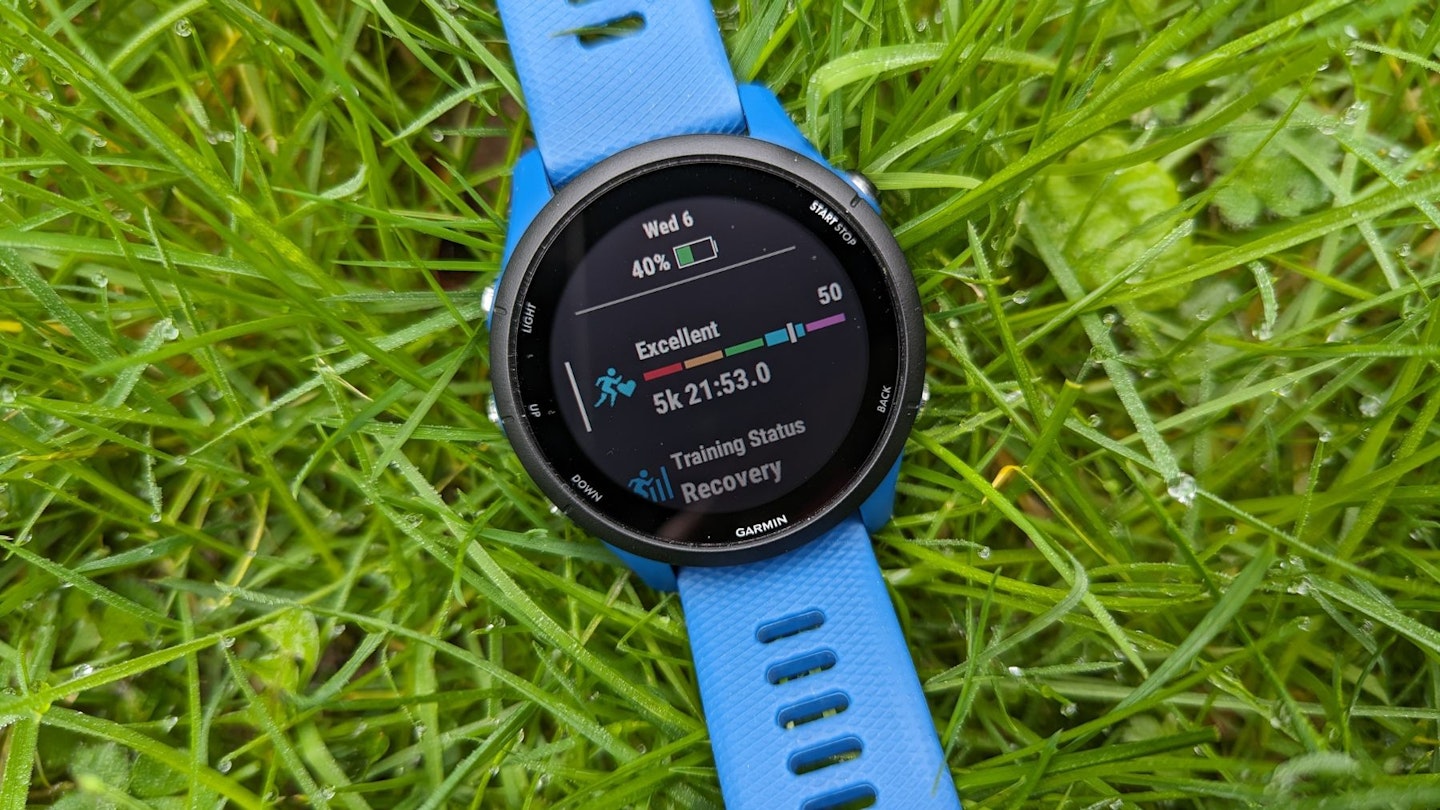
Health and fitness metrics
The Forerunner 255 offers plenty of health and fitness tools that are likely enough for all but the most dedicated athletes. Alongside heart and blood oxygen monitoring, this watch monitors stress, breathing rate, and heart rate variability (HRV). HRV can indicate when your body is under strain, for example, because you are getting ill or have trained a lot and need to focus more on recovery. And there’s the usual step count and calorie burn estimates you’d expect from any of the best fitness trackers.
The Forerunner 255 also offers sleep tracking and uses your sleep data to provide a Body Battery score, which gives you an idea of how ready your body is for the day ahead. The watch can also track a range of popular activity types, including running, walking, strength training, HIIT, and yoga, among others.
The Garmin Connect app combines all these metrics to provide more information, including your fitness age and an estimate of your VO2 Max. You can also get insights into your training load, the effect of that training (for example, is it improving your aerobic fitness, or your anaerobic fitness) and estimates of how long it might take you to complete a race.
Overall, it’s a comprehensive package that offers more than enough data to people who want to keep fit. And, for more serious athletes, the training and recovery data is invaluable to support specific goals.
Impressive performance
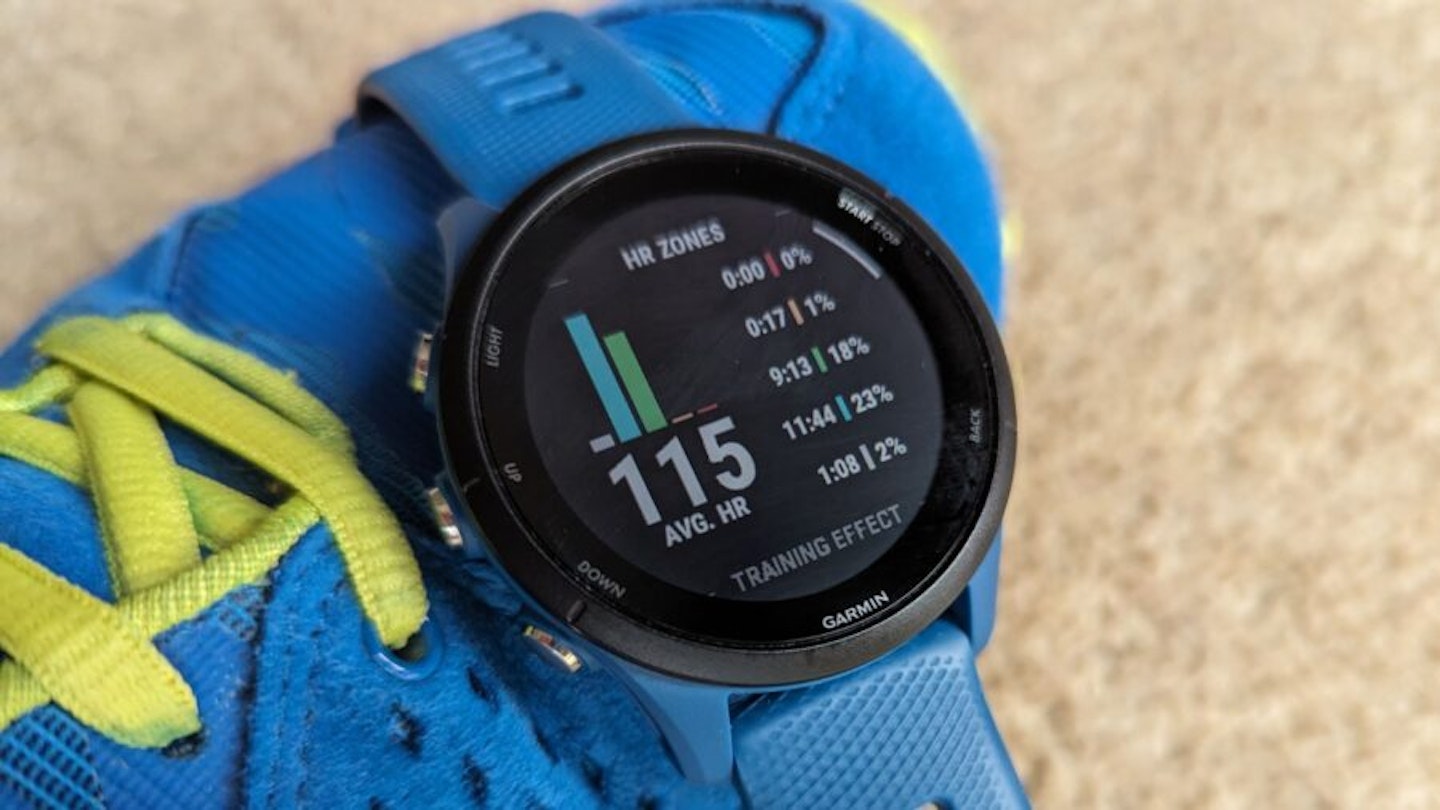
I’ve been using the Garmin Forerunner 255 for an extended period, and I really like what it offers. Setting it up was extremely simple: plug in the proprietary charger, switch it on, and pair it with the Garmin Connect app. I was up and running in just a few minutes.
In terms of its design, the Forerunner 255 is lightweight and comfortable. The silicone strap is soft and flexible, and I appreciated the traditional watch buckle, which felt much more secure than some watch straps I’ve seen. The screen is a colour MIP (Memory-in-Pixel) display, which is easy enough to read wherever I’ve been. However, it isn’t as bright or as sharp as the best AMOLED displays on some other Garmin models, such as the Venu 3.
But the real test for this watch is how it records data and tracks activity. I was very impressed overall. Heart rate tracking and step counting felt very consistent, and in-line with other fitness trackers and smartwatches I’ve tested.
Sleep tracking was perhaps slightly less reliable, but this is an issue I’ve found with almost every smartwatch and fitness tracker I’ve ever worn. It’s certainly no less accurate than anything else I’ve tried, and, in general, I felt it offered a reasonable reflection of how well I’d slept each night.
Highly accurate tracking
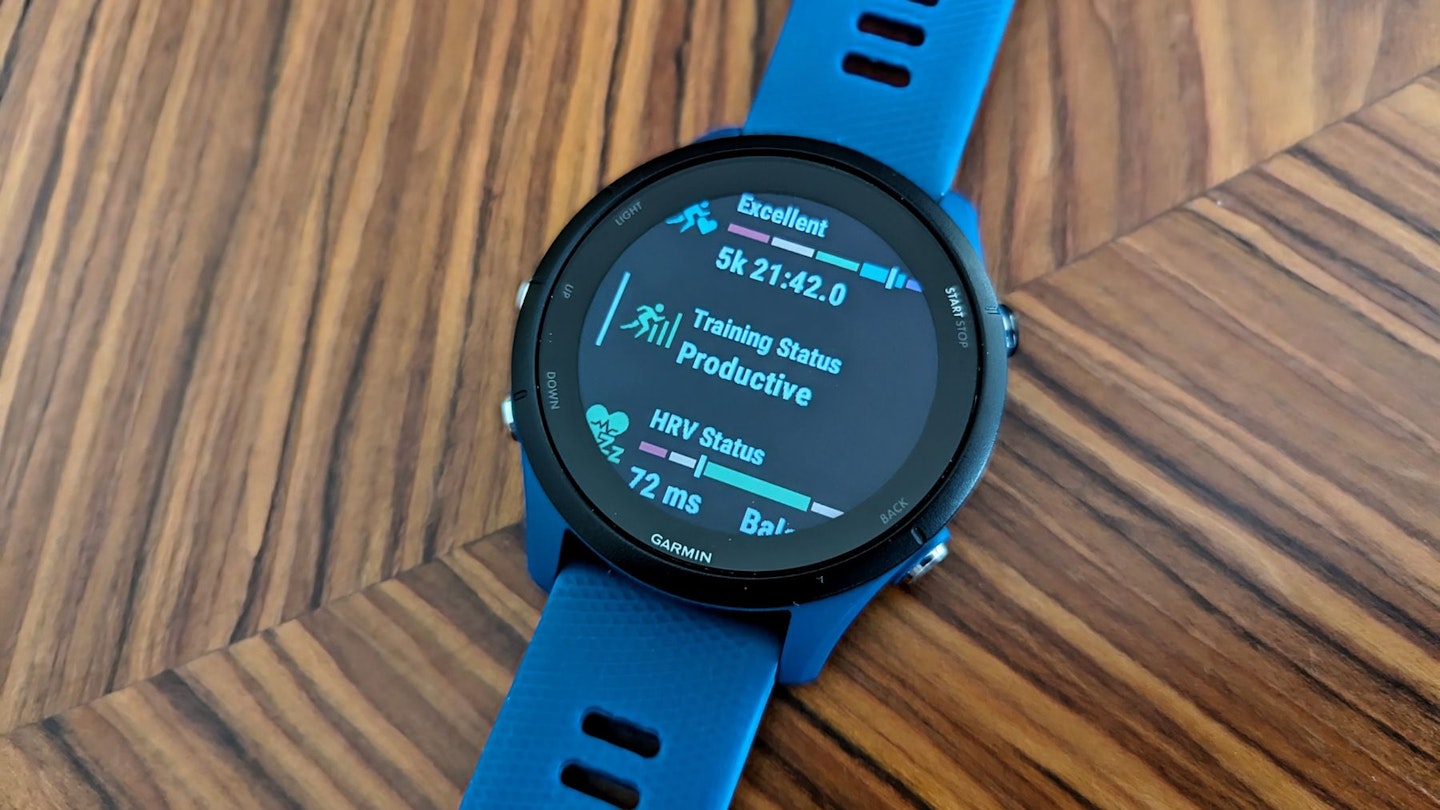
When it came to tracking workouts, the Forerunner 255 did an excellent job. I tested it with resistance training, high-intensity interval training, and multiple outdoor runs and walks. Heart rate data was consistent, and calorie burn estimates felt realistic, and again, not too far away from other devices after doing the same workouts.
The built-in GPS was particularly good. The Forerunner 255 offers multi-band GPS, which means it tracks your position more accurately than single-frequency or connected GPS. I tested it covering the same 5.4km route that I use to test any fitness tracker or smartwatch, and I found it to be consistent every time. The watch also provided me with split times, average speed, and heart rate data as I went. The map data provided by the Garmin Connect app was also very accurate, even correctly showing which side of the road I was on.
I also appreciated other metrics, such as the Training Status and Recovery Time features. These tell you how your training affects your performance and fitness and how long it will take to recover from your most recent workout.

One final addition is the Morning Report. This feature summarises how well you slept the previous night and how hard you’ve been training and can suggest whether to take a rest day. It’s a nice extra to wake up to.
I found these metrics were in tune with how I was feeling. After a particularly tough series of workouts, it would sometimes tell me that I had veered from ‘productive’ training to ‘strained’, which was a hint that it was time to focus more on recovery. While I probably didn’t need the watch to tell me I was feeling tired (because sore muscles are fairly noticeable by themselves), it was a helpful nudge in the right direction. It could be particularly beneficial to people who may not listen to what their body is telling them and could overtrain, risking injury as a result.
Garmin Connect
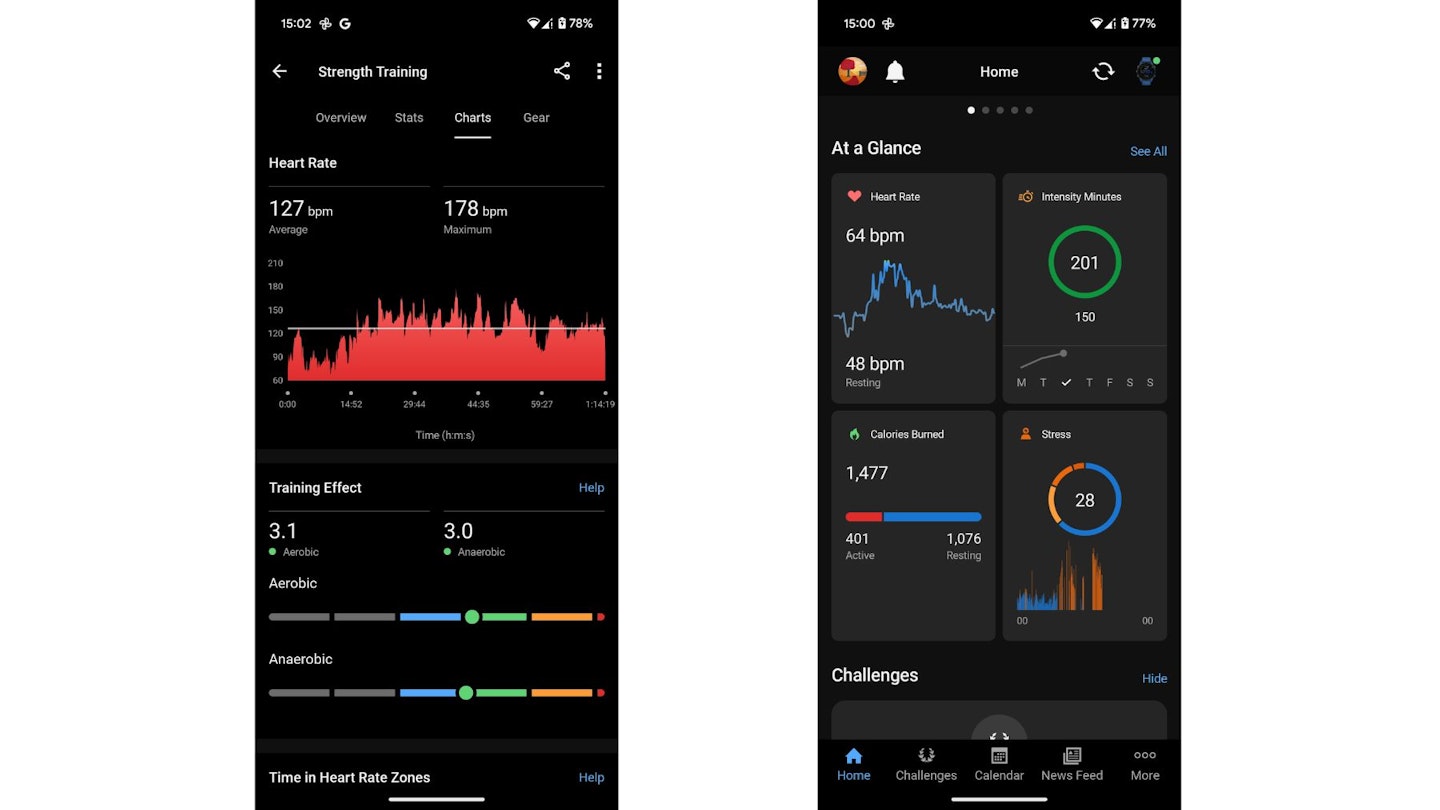
The Garmin Connect app does an excellent job of presenting all this data in a clear and simple way. I love having access to all that information, and the colour coding, plus the well-produced graphs, make it very easy to use. If you love data, the Garmin Connect app is one of the most comprehensive around. But, if you prefer to keep things simple, you can also customise what you see.
The Forerunner 255 doesn’t have all the features of the most advanced (and more expensive) Garmin devices. Personally, I didn’t feel there was anything missing that I desperately wanted. Garmin’s Training Readiness score was perhaps the most obvious omission, but there was more than enough to keep me happy. And despite wearing it continuously and using it a lot, battery life lived up to the 14-days claimed by Garmin.
Any downsides?
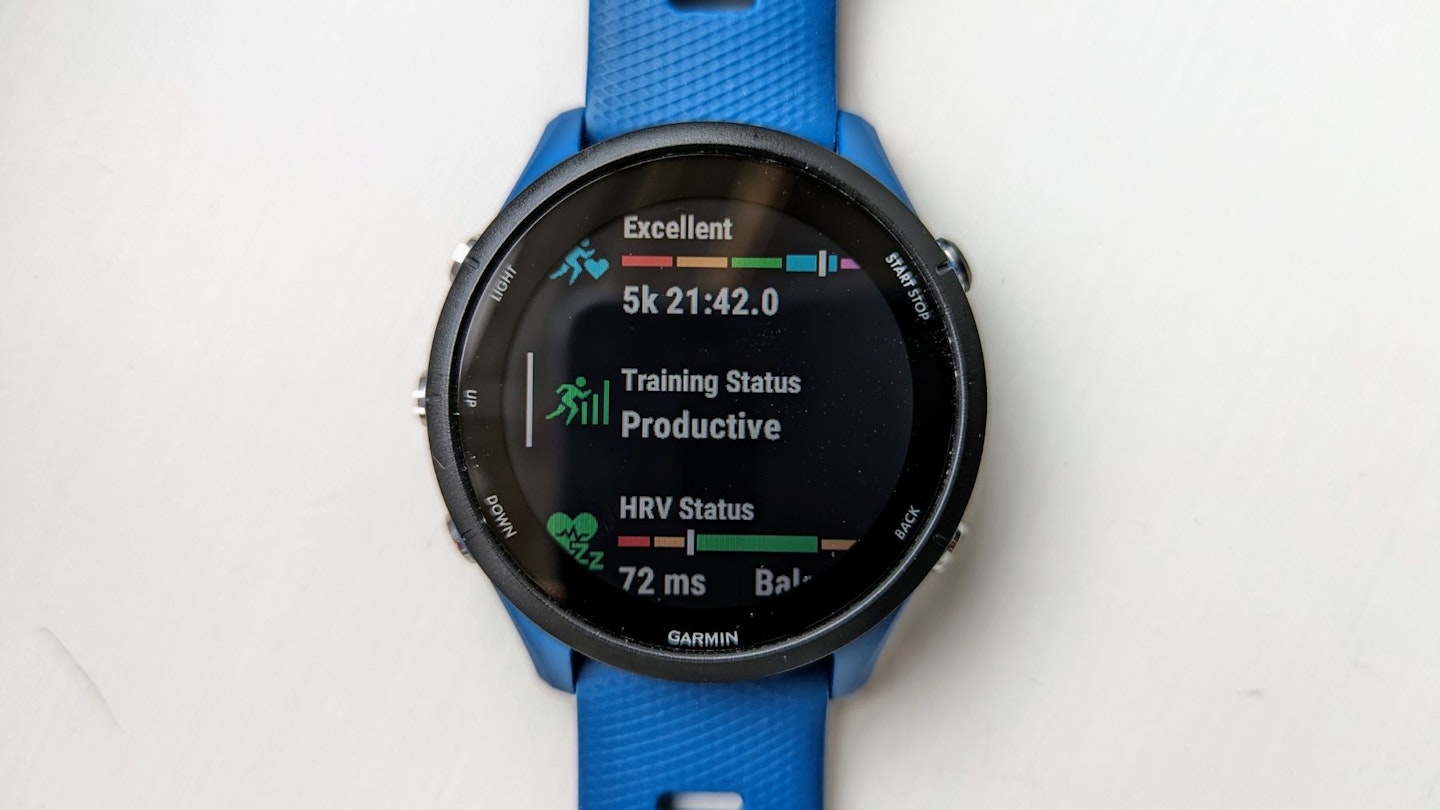
There isn’t a lot to complain about with the Forerunner 255. But one area where I felt that it was notably less good than some alternatives was the display.
To clarify, the display isn’t bad. It’s easy to read, and bright enough to be visible in any conditions I’ve worn it in. There’s also a backlight if you need to make it brighter.
However, MIP screens just can’t compete with AMOLED displays for brightness or sharpness, and with an increasing number of newer Garmin watches offering AMOLED instead of MIP, it just makes the 255 seem a little duller in comparison. I wouldn’t say that the lack of an AMOLED display by itself is a reason to ignore this watch. But it is one of the few less impressive elements of this device.
It’s also worth mentioning that the Forerunner 255 (and most other Garmin watches) aren’t fully-fledged smartwatches like the Apple Watch Series 9, or Google Pixel Watch 2. It provides apps through Garmin Connect IQ, but the choices are limited. It offers basic notifications, and the (somewhat limited) Garmin Pay service for contactless payments. But this isn’t a device to consider if you want the full smartwatch experience.
Price and competition
Having been around since 2022, the Garmin Forerunner 255 is often available for less than its RRP of £299.99 - we’ve seen it for closer to £200. And at that price, you’re getting an excellent mid-range running watch which still has plenty to offer. It’s comparable in price to the newer Forerunner 165, but still has one or two tricks that the newer model lacks, including multi-band GPS, training status and training load data, and better battery life.
Its successor in the mid-range category is the Garmin Forerunner 265. Like the 165, it enjoys the benefits of a brighter AMOLED screen and Garmin’s Training Readiness metric, which the 255 lacks. But, for the RRP of £429.99, there’s the question of whether the price difference is worth it for anyone but the most committed of athletes.
For very serious runners, a more advanced device such as the Garmin Forerunner 965 may be a better choice. This offers on-wrist running dynamics data, including cadence, stride length and ground contact time. It also has a superb AMOLED display, and the battery can last up to 23 days in smartwatch mode, or 31 hours in GPS mode.
Beyond Garmin, there are plenty of other very good running watches to consider. The Coros Pace 3 has dual-frequency GPS, a touchscreen display, and plenty of health and fitness tools. It’s also cheaper, with an RRP of £219. It’s particularly good for runners, although the Coros app is slightly less user-friendly.
Verdict
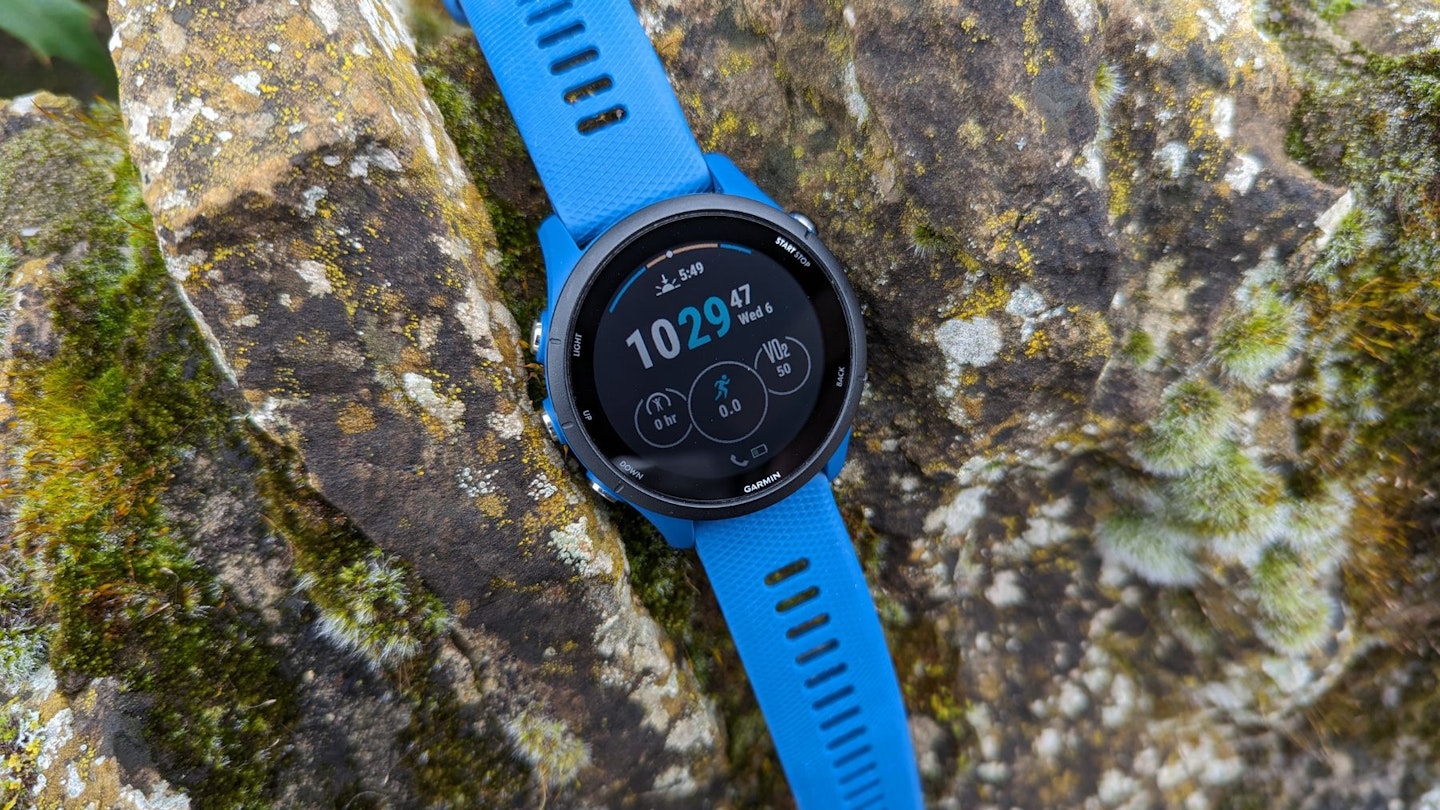
Garmin positions the Forerunner 255 as a mid-range device that will help runners “notch your best time yet”. And with the suite of training and recovery tools it offers, we’d absolutely agree that this watch can help runners up their game.
But this watch is far more than ‘just’ a running watch. The comprehensive health and fitness metrics it monitors make this a superb all-round fitness watch. It’s comfortable, easy to use, and the Garmin Connect app is, in my view, one of the very best fitness apps out there. The highly accurate GPS, excellent battery life and wide range of sports that it can track make this a viable choice for anyone who enjoys keeping fit.
If you’re keen on tracking the most common health and fitness metrics, want to be able to record a variety of exercise types, and don’t want a device that costs the earth, the Garmin Forerunner 255 remains an excellent choice.
 Garmin
GarminPros
- Excellent 14-day battery life
- Accurate GPS tracking
- Comprehensive health and fitness metrics
Cons
- Display isn’t the brightest
- Limited smartwatch features
| Dimensions | 45.6 x 45.6 x 12.9 (mm) |
| Weight | 49 grams |
| Screen | Transflective memory-in-pixel, 260 x 260 pixels |
| Water resistance | 5 ATM |
| Battery life | Up to 14 days |
| GPS | Multi-band |
| Wi-Fi | No |
| Compatibility | Compatible with iOS and Android |
- Heart rate
- Respiration rate
- Heart rate variability
- Blood oxygen
- Sleep tracking and nap detection
- Step counting
- Estimated calorie burn
- Stress monitoring
- Tracking for over 50 types of activity
More items to consider
 Coros
CorosThe Coros Pace 3 is an excellent and inexpensive GPS watch that will appeal to both casual and serious runners alike. It's plastic construction may feel slightly cheap, but also means the watch is incredibly light on the wrist - perfect for long runs. The Coros app provides plenty of insights and training support, too.
Pros
- Extremely accurate GPS
- Superb battery life
Cons
- Plastic materials feel cheap
 Garmin
GarminThe Forerunner 265 is the newer version of the Forerunner 255. It introduces some new features, such as Garmin's Training Readiness score. And it also has a significantly upgraded AMOLED screen, which is beautiful to look at. It's a superb all-round fitness tracking device, perfect for dedicated runners.
Pros
- Superb AMOLED display
- Touchscreen functionality
Cons
- Significantly more expensive than its predecessor, the Forerunner 255
- The improved screen does reduce battery life slightly
 Garmin
GarminIf you're looking for an entry-level running watch that won't break the bank, you could do worse than the Garmin Forerunner 55. Offering workout suggestions and recommended recovery times after exercising, it's a great option for those who are just starting out on their fitness journey, or are starting to step things up a notch.
Pros
- Workout suggestions and recovery guidance
- PacePro feature to help pace yourself
Cons
- Relatively low-quality display
Who tested it?
Steven Shaw is one of our Senior Content Writers. Passionate about health and fitness, Steven has been a technology writer for several years, with a particular specialism in fitness technology. He has extensive experience in testing and reviewing a wide range of fitness trackers and smartwatches.
How we tested it
I tested the Garmin Forerunner over a period of weeks. I wore it continuously to track sleep, blood oxygen, heart rate, step counts, and estimated calorie burn. I also exercised regularly with a variety of workouts, including resistance training, high-intensity interval training, walks, runs, and yoga.
I also used the Garmin Connect app daily to see how well the data synced from the watch, as well as assessing how that data was presented, and how easy it was to understand.
